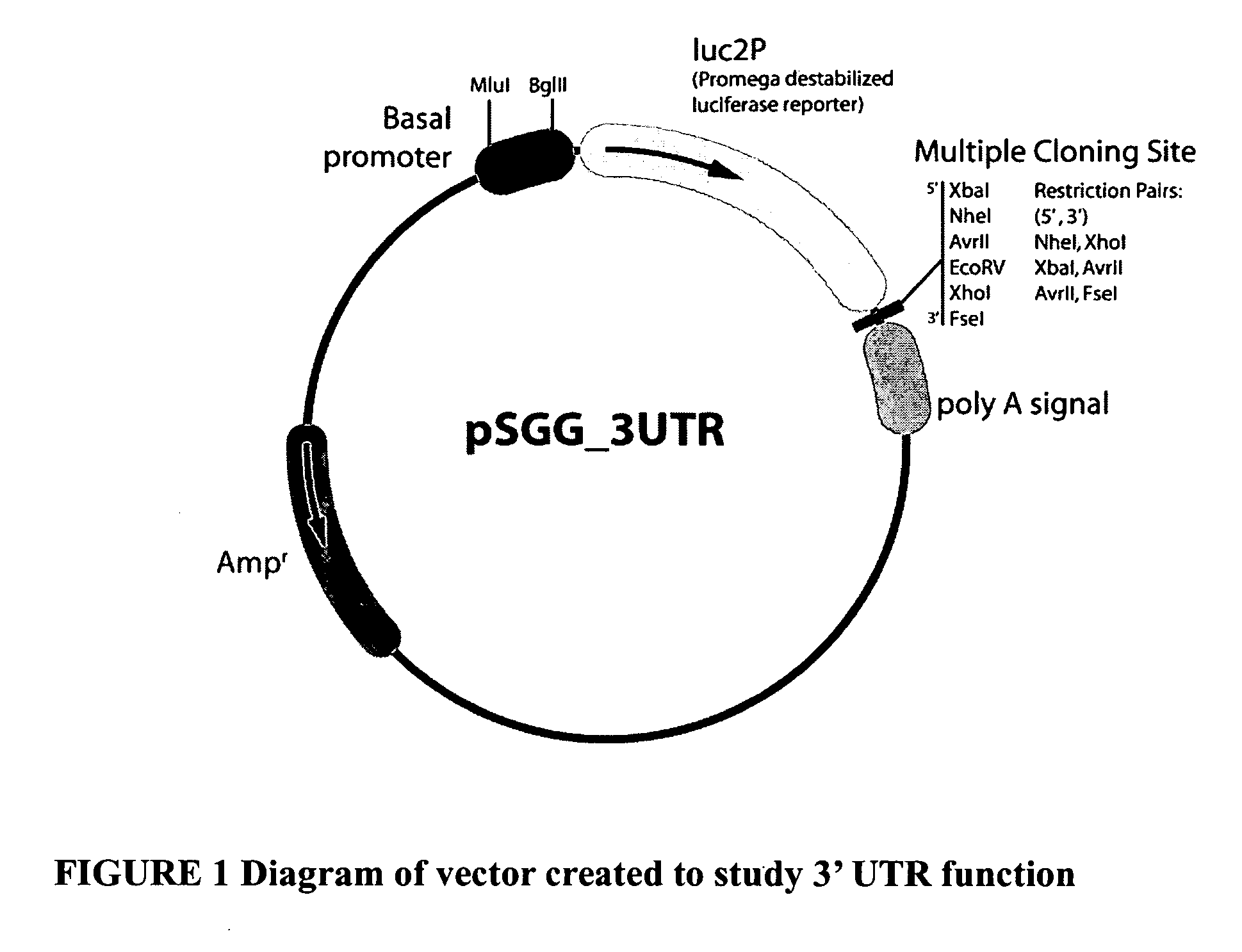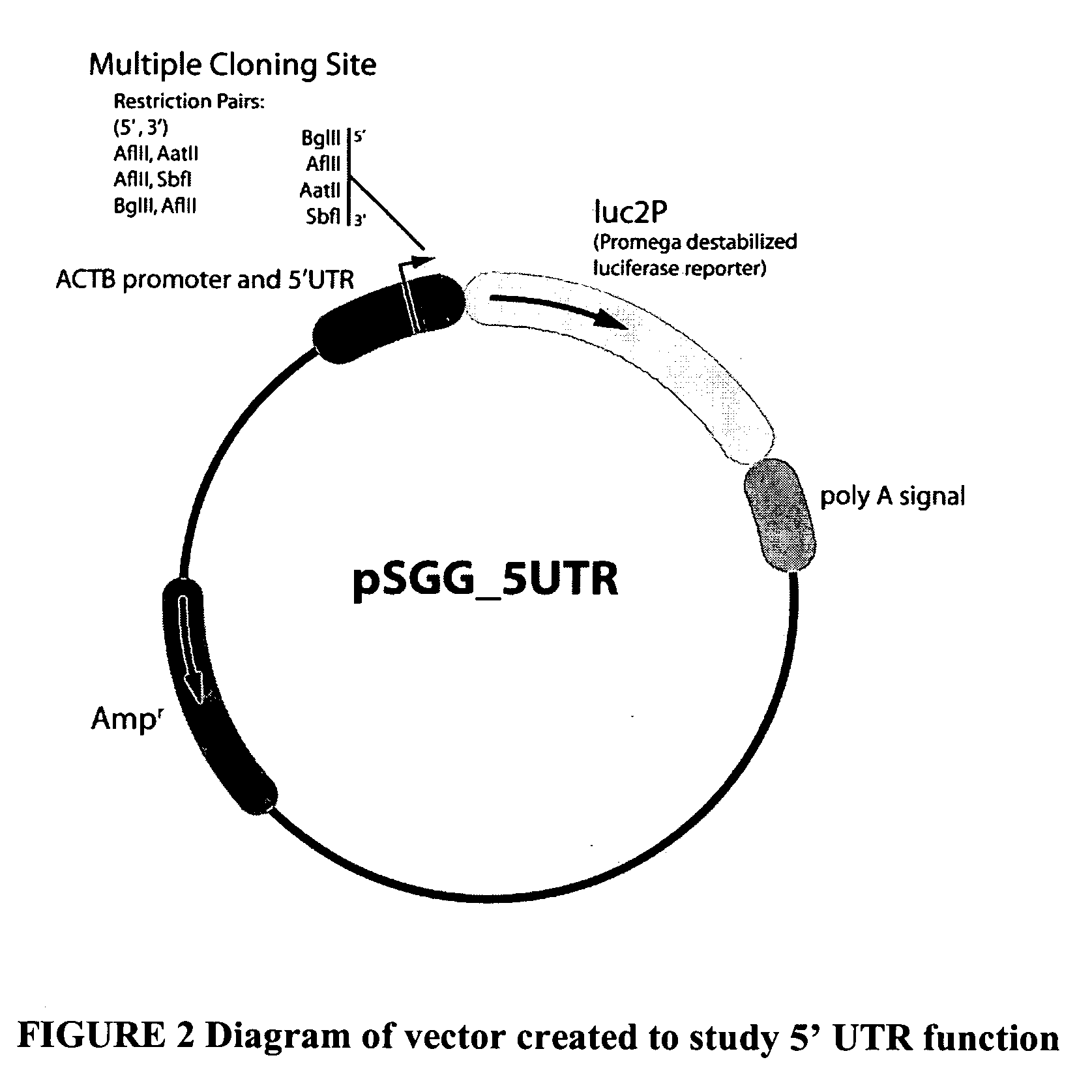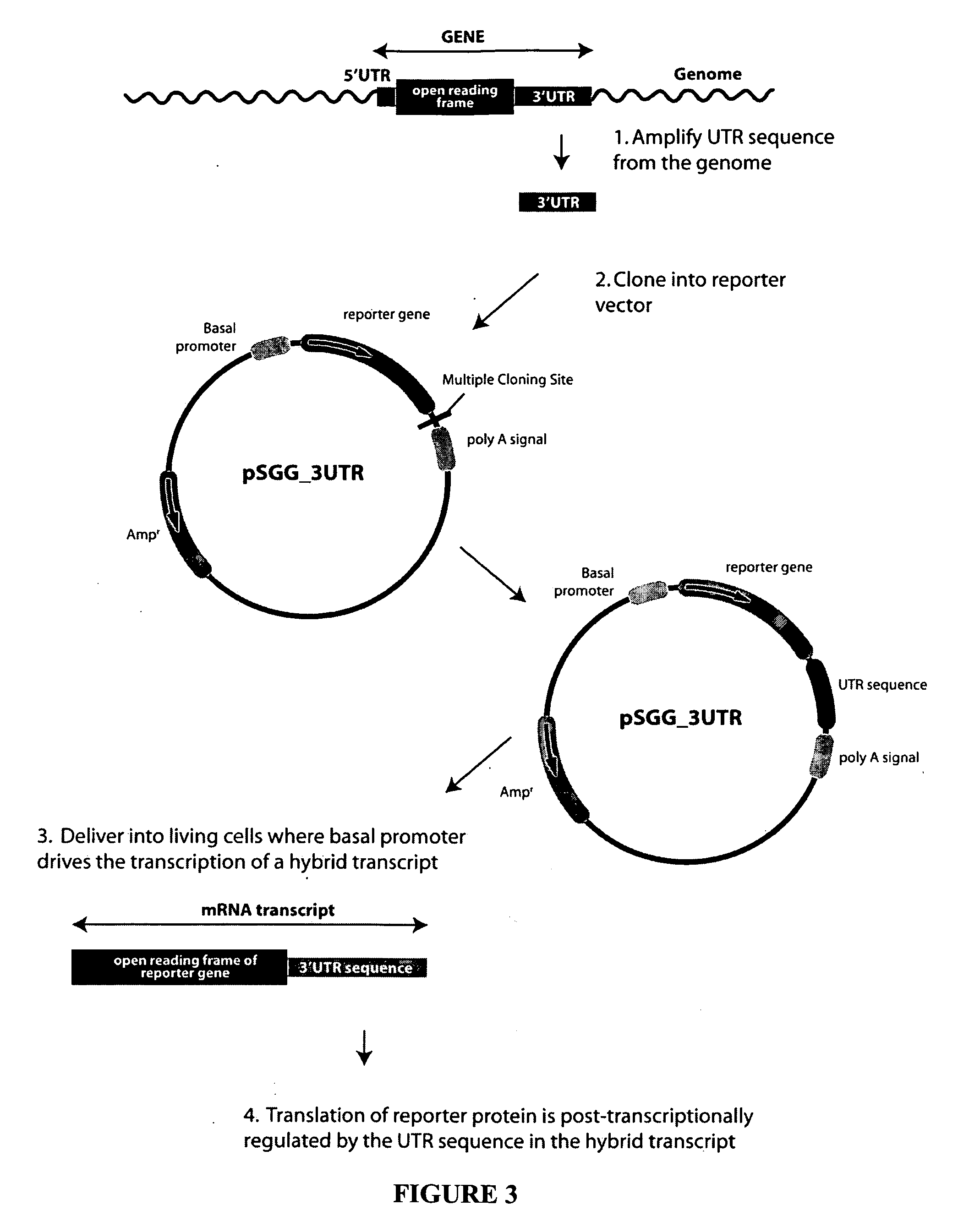Functional arrays for high throughput characterization of regulatory elements in untranslated regions of genes
a technology of untranslated regions and functional arrays, applied in the field of functional arrays for high throughput characterization of regulatory elements in untranslated regions of genes, can solve the problems of gaps in network and pathway knowledge, and the gap in the tools available for studying these elements on a large scal
- Summary
- Abstract
- Description
- Claims
- Application Information
AI Technical Summary
Benefits of technology
Problems solved by technology
Method used
Image
Examples
example 1
Description of Algorithm Used to Predict Human 3′ Untranslated Regions
[0149]The algorithm first downloads every RefSeq human cDNA sequence at NCBI. Next, the open reading frame (ORF) is identified for each cDNA sequence by finding the longest string of codons that begins with a methionine (AUG) and ends with one of the three stop codons (UAG, UGA, UAA). Each Refseq cDNA sequence with annotated ORF is then aligned to the human genome sequence to identify the exon structure and genomic location of each gene.
[0150]The algorithm then analyzes the exon structure at the 3′ end of the gene. If the last intron on the refseq alignment is less than 100 bp, it merges the last 2 exons and designates that as the last exon. The algorithm then looks at where the ORF ends and determines whether the UTR is spliced or not based on whether it is interrupted by an intron. If the UTR is spliced, the algorithm determines the length of the intron and also determines how much of the UTR is located in the s...
example 2
Pilot Experiment Demonstrating the Function of the Human Transferring Receptor UTR
[0155]The scientific literature reveals a handful of genes for which studies of the function of both transcriptional and post-transcriptional regulatory elements have been carried out, and in all cases such studies have yielded valuable insight into that gene's regulation. One of the best studied cases is that of the human Transferrin Receptor gene (hTR). hTR protein levels are known to increase more than 10-fold upon addition of an iron-chelator (DFO) to cells in culture. A panel of literature has shown that both the promoter and the 3′ UTR play necessary roles in mediating the change total protein output from the locus needed for an adequate response to iron depletion, and each is sufficient to supply moderate increases in gene expression response on its own. Specifically, Casey et al. (1988) found that the TFRC promoter's activity increases ˜2.8 fold upon treatment with DFO (an iron chelator). And t...
PUM
| Property | Measurement | Unit |
|---|---|---|
| Fraction | aaaaa | aaaaa |
| Fraction | aaaaa | aaaaa |
| Fraction | aaaaa | aaaaa |
Abstract
Description
Claims
Application Information
 Login to View More
Login to View More - R&D
- Intellectual Property
- Life Sciences
- Materials
- Tech Scout
- Unparalleled Data Quality
- Higher Quality Content
- 60% Fewer Hallucinations
Browse by: Latest US Patents, China's latest patents, Technical Efficacy Thesaurus, Application Domain, Technology Topic, Popular Technical Reports.
© 2025 PatSnap. All rights reserved.Legal|Privacy policy|Modern Slavery Act Transparency Statement|Sitemap|About US| Contact US: help@patsnap.com



